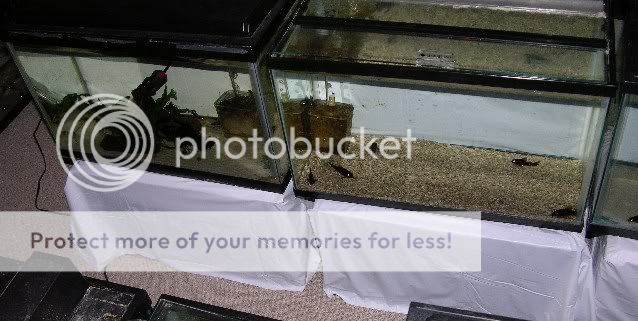Hi Rubyuk

I understand what you are saying. I just wanted to point out that MelaFix isn't the answer to every problem that the manufactures and lfs would like you to believe.
By the way, a quarantine tank need not be kept running all the time if you have made some advance preparation. Depending on the fish you might use it for, any small tank with a cover will do. A standard 10 gallon tank is often the least expensive way to go, and a piece of plastic will do for a cover. This is a basic box filter set up that can be used instantly if you keep a bit of floss in your regular tank filter.
In a pinch, a milk crate covered with plastic will do for a stand. It can be kept anywhere you have the room, even in a bathroom.
The whole thing can come down and be stored for future use once your fish have been moved to their regular home or cured of whatever ails them. Depending on the temperature of your climate and home, an inexpensive heater might be needed too.
I don't know what kind of tank and fish you have Rubyuk, and if this would be appropriate for you at all, but perhaps some of the other members will think about this. Considering the investment in time and money that you have in an aquarium, it's a shame for anyone to risk it all by introducing new fish to it who might be carrying a disease, yet many people do.
Thanks for that Inchworm,great advice and pics as well

I definitely cannot run a Q tank full time.
To run one part time as I think your suggestion above is though,how does that work with having to cycle the Q tank as presumably even with some filter floss added from the main tank its not going to cycle quick enough to use in an emergency for example ie fish having to go to hospital tank all of a sudden?
I can see how you could plan it for/when adding new fish.
After i've fishlessed cycle (I have an ongoing update thread with my readings if you want to look and comment on my progress) i'm planning on getting quite a % of my first in one go as members suggest you can fully stock from day 1 even though I dont plan to fully do that.
If I understand things right the first fish (all bought from same place) dont have to go in a Q tank as they are all going to be homed together whether it be in a Q tank or the main tank so there is no difference to the risk,if anything happens it happens?
After that I was going to carefully monitor any new purchases at the LFS for several weeks before buying.
I'm only going to stock from two local LFS that i'm impressed with and have been recommended to me as well by members on here.
So I was going to avoid any future additions until I know they've been in the LFS tanks for several weeks with no sign of illness.Not ideal plan I know,but some method in my madness?
Even though I have not stocked yet I'm going to my two LFS just about every weekend looking at new fish,getting ideas,researching the fish when I get home and monitoring the fish I plan to get.I've pretty much got a stocking plan in mind after several changes over the last 3 months of research.
By way of an example I'm keen on a pair of Pearl Gouramis and spotted my shop had some new arrivals but then after two weeks when I went back in they were been treated for fin rot,so I'm going to keep monitoring them before buying any.
I've read comments from some who have never had a Q tank,others say to keep new fish in Q for 2 weeks,others I've seen suggest upto 6 weeks!
I'll certainly give some thought to a temp Q tank dependent on the possible issues I've raised about having to cycle it each time it was to be set up for use?
Glad we're still mates







 Work for example patrols all the tanks three times a day where possible (it isn't always on a Saturday or Sunday) to ensure everything is caught at a stage of just starting rather than after it's become a real issue
Work for example patrols all the tanks three times a day where possible (it isn't always on a Saturday or Sunday) to ensure everything is caught at a stage of just starting rather than after it's become a real issue 
